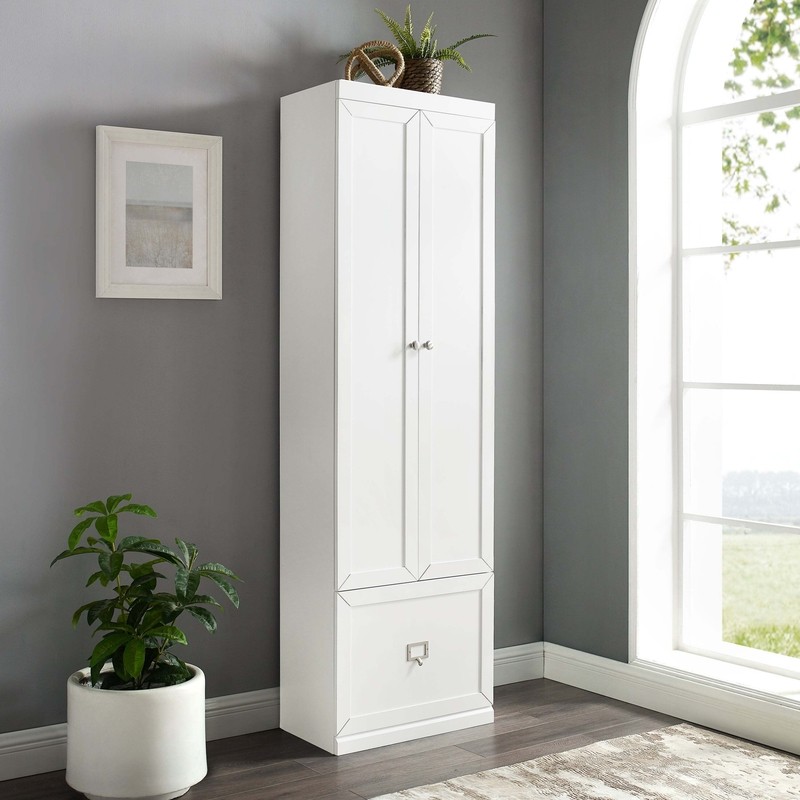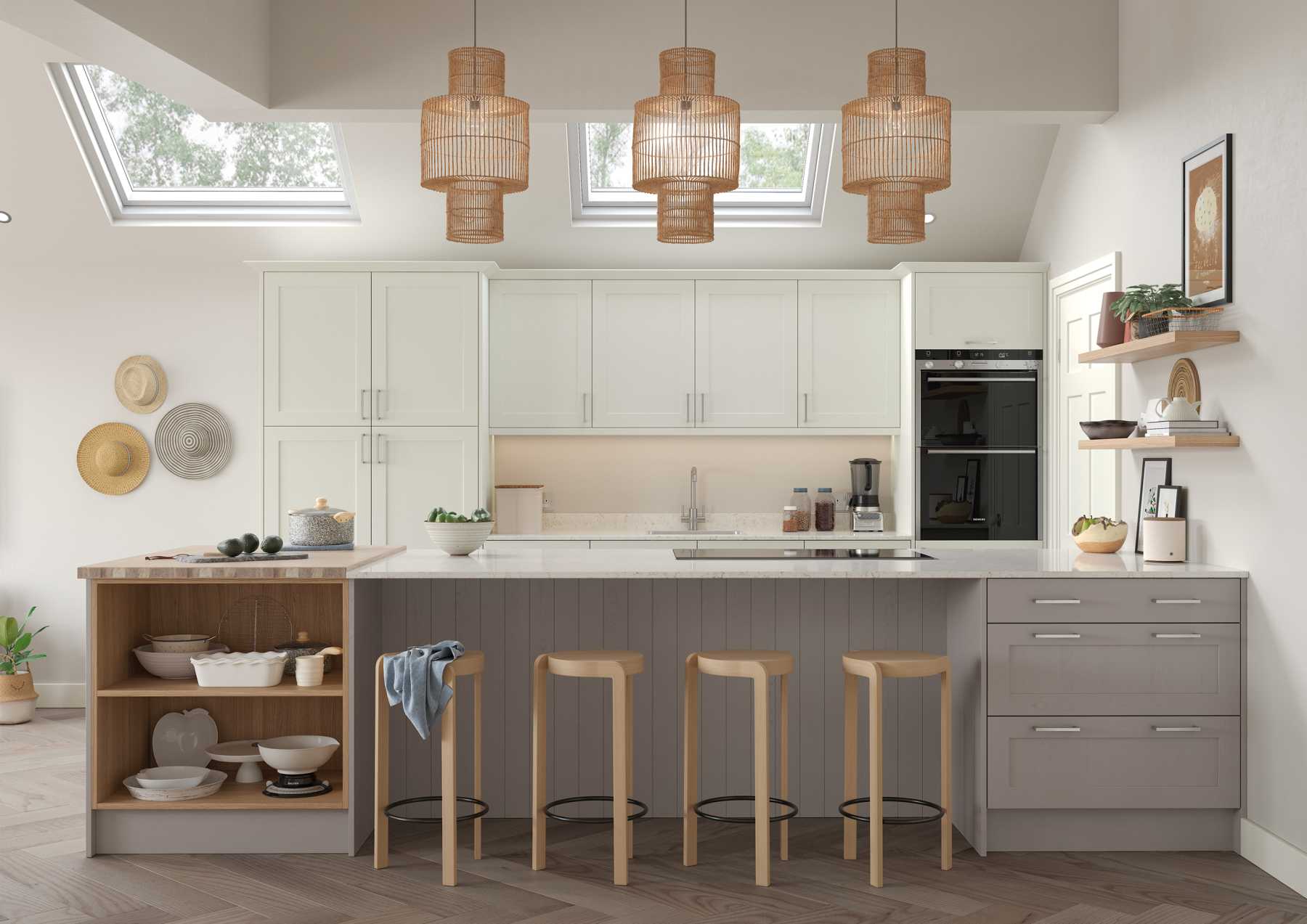Challenges of Narrow Kitchen Cabinets: Very Narrow Kitchen Cabinet

Narrow kitchen cabinets, while often a space-saving solution, can present several challenges that significantly impact functionality and overall kitchen usability. Limited storage capacity, inefficient workflow, and potential inconvenience are some of the key issues associated with these cabinets.
Storage Space Limitations
Narrow cabinets significantly reduce storage capacity, making it difficult to accommodate all your kitchen essentials. The limited depth restricts the size of cookware, dishes, and other items that can be stored within. This can lead to overcrowding, making it challenging to access items at the back and potentially causing damage to delicate items.
Impact on Kitchen Workflow and Efficiency
Narrow cabinets can hinder efficient kitchen workflow by making it difficult to access and retrieve items. Reaching into deep, narrow spaces can be inconvenient and time-consuming, especially for individuals with limited mobility. This can lead to frustration and increase the time spent on simple tasks like preparing meals.
Common Problems Faced by Homeowners
Homeowners with narrow kitchen cabinets often encounter various challenges, including:
- Difficulty storing large items: Narrow cabinets are often too shallow to accommodate large pots, pans, or baking sheets, forcing homeowners to find alternative storage solutions.
- Cluttered and disorganized cabinets: The limited space can lead to overcrowding and disorganization, making it difficult to find specific items quickly.
- Increased risk of damage: Overcrowded cabinets can increase the risk of damage to delicate items, especially when items are stacked on top of each other.
- Accessibility issues: Narrow cabinets can be difficult to access for individuals with limited mobility or reach, leading to frustration and inconvenience.
Pros and Cons of Narrow Cabinets
Here’s a table comparing the pros and cons of using narrow cabinets in a kitchen:
| Pros | Cons |
|---|---|
| Maximize space in small kitchens | Limited storage capacity |
| Create a sleek and modern aesthetic | Inefficient workflow and accessibility issues |
| Can be cost-effective | Can lead to overcrowding and disorganization |
Maximizing Space in Narrow Kitchen Cabinets

Narrow kitchen cabinets can be a challenge, but with the right strategies, you can maximize their storage potential. By incorporating clever storage solutions and utilizing space-saving accessories, you can create an organized and efficient kitchen.
Innovative Storage Solutions for Narrow Cabinets
Narrow cabinets often present a challenge when it comes to storage. However, several innovative solutions can help you maximize their space. Here are some ideas:
- Pull-out Shelves: These shelves slide out, providing easy access to items stored at the back of the cabinet. They are ideal for storing pots, pans, or baking sheets.
- Vertical Organizers: Utilize vertical space by using organizers with multiple tiers. These are perfect for storing spices, jars, or small appliances.
- Tiered Trays: Tiered trays create separate levels within the cabinet, allowing you to store multiple items in a small space. They are ideal for storing dishes, bowls, or lids.
Visual Layout of a Narrow Cabinet
Imagine a narrow cabinet with a pull-out shelf at the bottom for storing large pots and pans. Above the pull-out shelf, a vertical organizer holds spices and jars, while a tiered tray on the top shelf neatly organizes plates and bowls. This layout maximizes vertical space and provides easy access to all your items.
Benefits of Space-Saving Accessories
Space-saving accessories can significantly enhance the functionality of narrow cabinets. Here are some benefits:
- Spice Racks: These racks utilize the vertical space on cabinet doors or walls, keeping spices organized and easily accessible.
- Utensil Holders: Utensil holders keep cutlery and other utensils neatly arranged, freeing up valuable drawer space.
- Lazy Susans: These rotating platforms allow easy access to items stored in the corners of the cabinet. They are ideal for storing condiments, jars, or small appliances.
Must-Have Items for Maximizing Storage
To maximize storage in narrow cabinets, consider these must-have items:
- Pull-out Shelves: These are essential for maximizing storage space and providing easy access to items at the back of the cabinet.
- Vertical Organizers: Utilize vertical space with organizers for spices, jars, or small appliances.
- Tiered Trays: Create separate levels within the cabinet to store multiple items in a small space.
- Spice Racks: Organize spices on cabinet doors or walls for easy access.
- Utensil Holders: Keep cutlery and utensils neatly arranged in drawers.
- Lazy Susans: Access items in the corners of the cabinet with these rotating platforms.
Design Considerations for Narrow Kitchen Cabinets

Designing for narrow kitchen cabinets requires careful planning to maximize functionality and create a visually appealing space. Every design decision, from cabinet door styles to hardware choices, plays a crucial role in optimizing a narrow kitchen’s limited space.
Cabinet Door Design
Cabinet door design significantly impacts accessibility and functionality in narrow kitchens. The choice of door style can influence how easily you can access items and how much space is wasted.
- Flush Doors: Flush doors are a good choice for narrow spaces as they offer a clean, streamlined look and don’t protrude into the walkway. This minimalist design maximizes usable space by minimizing the amount of space the doors take up when open.
- Recessed Doors: Recessed doors are similar to flush doors, but they have a slightly sunken panel, giving them a more subtle and sophisticated look. They are also a great choice for narrow spaces, as they do not take up much space when opened.
- Raised Panel Doors: Raised panel doors, with their decorative raised panels, add a touch of elegance to the kitchen. However, they may not be the best choice for narrow kitchens as they can take up more space when opened.
- Glass Doors: Glass doors are a popular choice for cabinets in narrow kitchens as they offer a visual appeal and create a sense of openness. However, it is essential to choose glass doors that are sturdy and easy to clean.
- Sliding Doors: Sliding doors are an excellent choice for narrow kitchens, as they save space by sliding open instead of swinging outwards. They are ideal for cabinets above countertops or in tight corners, eliminating the need for additional space to open the doors.
Cabinet Hardware, Very narrow kitchen cabinet
Choosing the right cabinet hardware for narrow cabinets is essential for maximizing functionality and aesthetics.
- Pull-Out Shelves: Pull-out shelves are a must-have for narrow cabinets, as they make it easier to access items stored in the back. They are especially useful for deep cabinets where it can be challenging to reach the contents.
- Sliding Drawers: Sliding drawers are an excellent alternative to traditional drawers in narrow spaces. They glide smoothly and can be fully extended, making it easy to access items at the back of the drawer.
- Corner Shelves: Corner shelves maximize space utilization in narrow kitchens. These shelves are specifically designed to fit into the corner of the cabinet, making the most of otherwise wasted space.
- Cabinet Organizers: Cabinet organizers are a versatile solution for maximizing space in narrow cabinets. They come in various forms, such as trays, dividers, and baskets, allowing you to categorize and store items efficiently.
Cabinet Materials
Choosing the right cabinet materials for a narrow kitchen is crucial for achieving both aesthetic and functional goals.
- Wood: Wood cabinets are a classic and timeless choice for kitchens. They are durable, versatile, and can be customized to match any style. However, they can be expensive, and some wood types require regular maintenance.
- Laminate: Laminate cabinets are a budget-friendly alternative to wood cabinets. They are durable, water-resistant, and available in various colors and patterns. However, they may not be as stylish or as long-lasting as wood cabinets.
- Thermofoil: Thermofoil cabinets are made with a wood core that is covered with a thin layer of plastic laminate. They are durable, moisture-resistant, and available in a wide range of colors and finishes.
- Metal: Metal cabinets are becoming increasingly popular in modern kitchens. They are durable, easy to clean, and can be customized with different finishes. However, they can be more expensive than other options and may not be as warm or inviting as wood cabinets.
Cabinet Styles
Different cabinet styles suit narrow kitchens better than others. Here’s a table showcasing the suitability of various cabinet styles for narrow kitchens:
| Cabinet Style | Suitability for Narrow Kitchens | Pros | Cons |
|---|---|---|---|
| Shaker | Highly Suitable | Simple and clean design, maximizes space, versatile | May lack visual interest in small spaces |
| Modern | Suitable | Sleek and minimalist, visually appealing | May not be suitable for traditional kitchens |
| Traditional | Less Suitable | Ornate and detailed, can make the space feel cluttered | Can make the space feel smaller |
| Contemporary | Highly Suitable | Clean lines, maximizes space, modern look | May not be suitable for traditional kitchens |
Very narrow kitchen cabinet – You know those super skinny cabinets that are practically just a sliver of space? They’re great for storing spices or small appliances, but you can’t really fit much else in them. If you’re looking for a better way to utilize those awkward corners, check out a corner base kitchen cabinet.
These cabinets can be customized to fit your space perfectly, and they offer a ton of storage without taking up any valuable floor space. You’ll be surprised at how much extra room you can create with a corner base cabinet, even if your kitchen is already feeling cramped.
My kitchen cabinets are so narrow, it’s hard to fit anything in them! I’m thinking about adding molding to kitchen cabinet doors to give them a more elegant look, but I’m not sure if it’ll make them even more cramped.
Maybe I should just try to organize better, huh?
